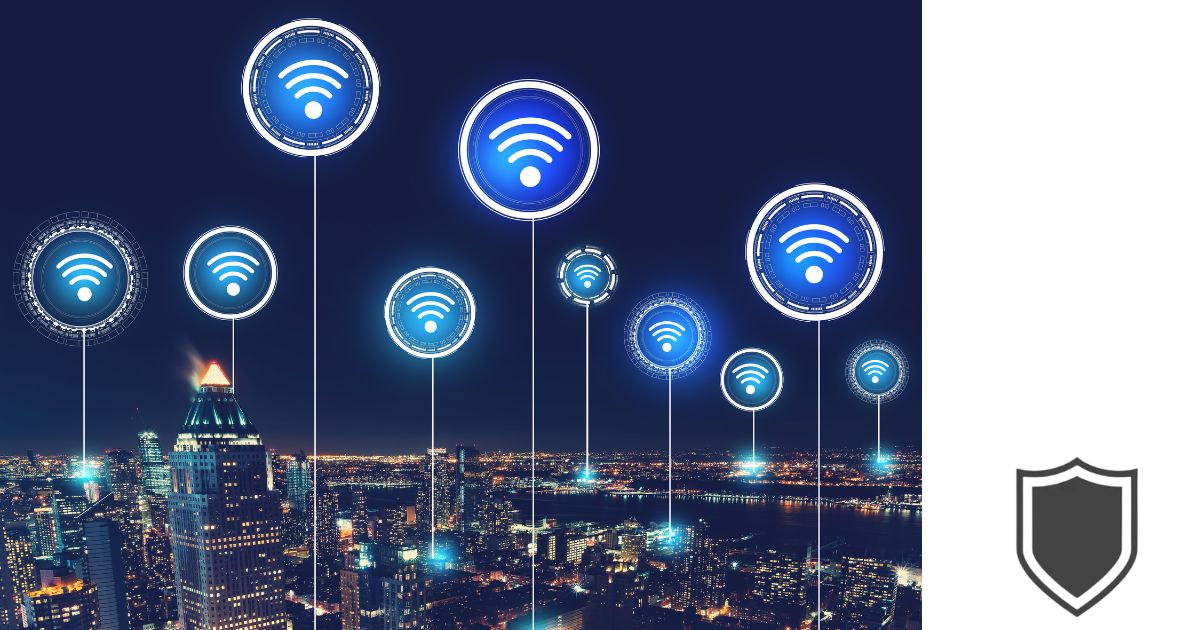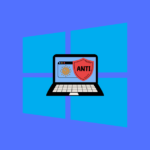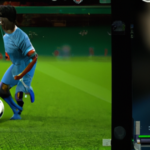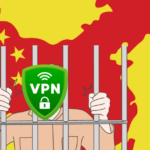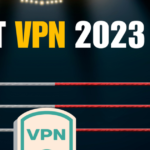Hello, global web explorers! If you share my passion, you appreciate the ease of using public WiFi—connecting from cafes, libraries, or airports. However, we must acknowledge, as convenient as these networks can be, their security often resembles that of a diary with a compromised lock. Enter the realm of VPNs, your digital invisibility cloak.
I’m here to show you how to use VPN on public WiFi, so you can keep prying eyes away from your personal data. Think of it as your personal internet bodyguard, stepping up to provide security and privacy no matter where you connect. Ready to surf the net with the confidence of a cybersecurity ninja? Let’s dive in and get you set up!
Understanding VPNs

As a frequent user of public Wi-Fi, I’ve learned the importance of VPNs to ensure my online privacy and security. VPN stands for Virtual Private Network, and it’s a service that allows you to create a secure connection to another network over the internet. By using a VPN, I can keep my online activity private and protect myself from potential threats on public Wi-Fi networks.
One of the main benefits of using a VPN is the encryption it provides. When I connect to a public Wi-Fi network, my VPN adds a layer of security by encrypting my internet traffic. This means that even if a hacker is able to intercept my data, they won’t be able to decipher the information because it’s encrypted. As a result, I can browse, stream, and even make online transactions with more freedom and confidence.
Another advantage of using a VPN is the ability to anonymize my internet activity. When I’m connected to a VPN, my real IP address is hidden, and my traffic appears to be originating from the VPN server instead. This is helpful in preventing websites and online services from tracking my location and online activities.
In addition to these security benefits, using a VPN can also give me access to region-restricted content. Since my traffic appears to come from the VPN server, I can access content that’s not available in my geographic location by connecting to a server in another region. This opens up a whole new world of possibilities for me, making my online experience more versatile and enjoyable.
To start using a VPN, I simply pick a reliable VPN service provider, create an account, and download the VPN software onto my devices. Once installed, I can connect to the VPN server of my choice and enjoy a safer and more private browsing experience on public Wi-Fi networks.
Reasons to Use VPN on Public Wi-Fi

When I connect to public Wi-Fi, I always make sure to use a VPN (Virtual Private Network), and here’s why. For starters, public Wi-Fi networks can be incredibly vulnerable to hacking and eavesdropping. By using a VPN, I protect my data from being intercepted by potential hackers or even curious third parties.
Another reason I use a VPN is to prevent others from tracking my online activity. Without a VPN, websites and advertisers can see my IP address and location, allowing them to follow my digital footprints. With a VPN, my real IP address is hidden, making it almost impossible for anyone to track me.
Moreover, one of the most significant benefits of using a VPN on public Wi-Fi is that it allows me to access geo-restricted content. Sometimes, certain websites or streaming services are only available in specific regions. By connecting to a VPN server located there, I can access the content seamlessly, even if I’m miles away.
Lastly, some public Wi-Fi networks may impose restrictions or censorship on specific websites or content. A VPN helps me bypass these restrictions, so I can freely surf the web without any limitations.
Choosing the Right VPN

When it comes to using a VPN on public Wi-Fi, there are several factors to consider while choosing the right one. In this section, I’ll discuss the differences between free and paid VPNs and the importance of compatibility with your device.
Free Vs Paid VPN
In my experience, there’s a significant difference between free and paid VPNs when it comes to security, features, and performance. Free VPNs might be tempting since they don’t require any upfront investment, but their limited features could compromise your security on public Wi-Fi. For instance, some free VPNs might have weak encryption or track your browsing activity for advertising purposes. On the other hand, paid VPNs like ExpressVPN offer a more comprehensive set of features and better security measures to ensure your online safety.
As a general rule, I recommend investing in a reliable and well-reviewed paid VPN when connecting to public Wi-Fi, as it’s more likely to protect your privacy and provide a pleasant browsing experience.
Compatibility With Your Device
Another crucial aspect to consider when choosing a VPN is the compatibility with your device. A good VPN should support multiple platforms like Windows, macOS, Android, and iOS, since I might want to use the VPN on several devices. Compatibility ensures that I can swiftly switch between devices and use my VPN regardless of the type of device I’m connected to the public Wi-Fi with.
Installing and Setting Up VPN

Downloading VPN Application
First, I want to find a reliable VPN service that suits my needs. I can consider some of the best VPNs in the market. Once I’ve chosen my VPN provider, I download and install their application on my device such as a laptop, smartphone, or tablet. Most VPN providers have dedicated applications for various operating systems like Windows, macOS, Android, and iOS, making installation a breeze.
Configuring VPN Settings
Once the VPN application is installed, I need to configure the settings to make sure my connection is secure and private while using public Wi-Fi. Here are the steps I follow:
- Log in to the VPN application: I use my account credentials to log in to the VPN app. If I don’t have an account yet, I need to sign up for one, typically on my chosen VPN provider’s website.
- Choose the right server: Depending on my needs, I can choose the VPN server location I want to connect to. If I want to access geo-restricted content, for example, I’ll want to connect to a server in the country where the content is available. Otherwise, connecting to a nearby server is generally faster.
- Enable necessary security features: I make sure to enable essential security features in the VPN app settings such as the kill switch and secure protocols like OpenVPN or WireGuard. These help protect my data from potential snoopers on public Wi-Fi networks.
- Connect to the VPN: Finally, I click or tap the connect button to start the VPN connection. Now I can securely browse the internet using public Wi-Fi while my online activities remain private and encrypted.
Connecting to VPN on Public WiFi

Now I’ll share a few steps on how to connect to a VPN while using public WiFi.
First, I choose a reliable VPN service. There are many options available, but I prefer to go with a well-reviewed provider that offers strong security features and good performance. Once I have an account, I download and install the VPN app on my device.
Next, when I connect to a public WiFi network, I simply launch the VPN app and choose the location or server I want to use. This might be determined by factors such as the nearest server to me or a specific country for accessing geo-blocked content.
After selecting the server, I click the connect button and wait for the VPN to establish a secure connection. I can easily tell when it’s successfully connected, as the VPN app will show a notification or a change in the interface, such as a green or connected status.
Now that I’m connected to the VPN, all my internet traffic will be encrypted and routed through the chosen server. This helps protect my online activities from potential threats on public WiFi like hackers or data breaches. It also helps maintain my privacy in case someone is monitoring the network.
Remember, it’s always best to disconnect from the VPN once I’ve finished using public WiFi. This ensures that my device won’t disconnect from the VPN unexpectedly and revert to an unprotected connection.
By following these simple steps, I can safely use public WiFi and enjoy the benefits it offers while keeping my online activities secure and private.
Maintaining VPN Usage

Now I will share a few tips on maintaining VPN usage while connected to public Wi-Fi.
Regularly Updating VPN Application
To ensure my VPN application functions optimally, I always make it a point to keep it up-to-date. This is crucial, as developers often release new features, bug fixes, and other improvements to enhance security and performance. By habitually updating my VPN app, I can have peace of mind knowing that I am using a reliable and secure connection.
Checking VPN Connection Status
Connecting to public Wi-Fi networks sometimes poses a risk to my online security. This is why I always ensure that my VPN connection is active and working correctly. I watch out for any disconnection signs, such as increased latency or sudden loss of internet access. If this occurs, I’ll immediately reconnect to my VPN server to maintain a secure connection.
Common Issues and Solutions

Slow Internet Speed
Sometimes when I use a VPN on public Wi-Fi, I might experience slow internet speeds. This can happen due to various reasons like the VPN server being too far away, or the encryption process, which can increase latency. It’s important to choose a server that’s geographically closer to my location to minimize lag. Also, I can try using a different VPN protocol – for instance, switching from OpenVPN to WireGuard might offer better performance.
Another possible reason for slow internet speeds could be poor internet connectivity or intermittent network connection, which can be usually resolved by moving to an area with a stronger Wi-Fi signal. Finally, I’ll make sure my VPN app is updated, as developers continually make performance improvements in newer versions.
Unsuccessful Connection Attempts
There are times when I might face difficulty connecting to a VPN server while using public Wi-Fi. One of the first things I can try to solve this issue is restarting my device, as it can help clear any temporary glitches. If that doesn’t work, I can attempt to connect to a different server or change to a different VPN protocol.
In some cases, public Wi-Fi networks might block VPN connections. To get around this, I can try changing the VPN port number in the app settings. I might also want to consider upgrading to a reliable VPN provider like NordVPN, which offers advanced features like obfuscated servers to overcome network restrictions.
The Final Word
Alright, team, that’s the lowdown on locking down your digital life. Now you know how to use a VPN on public WiFi, and the peace of mind it brings is priceless. Just like you wouldn’t leave your house without locking the door, don’t hop onto a public network without the security of a VPN.
It’s your personal fortress in the wild west of the web, keeping your data as safe as a treasure in a bank vault. So, go ahead and enjoy that latte at your favorite cafe or wait for your flight while streaming your shows—just make sure your VPN is up and running. Stay secure and browse boldly!
How to Use VPN On Public WiFi FAQs

How can I stay secure with a VPN on public Wi-Fi?
To stay secure with a VPN on public Wi-Fi, first choose a reliable VPN service. Ensure that the VPN uses strong encryption and has a good privacy policy. Once you have installed the VPN on your device, connect to a VPN server before accessing public Wi-Fi networks. This will encrypt your connection and protect your online activities from eavesdroppers and hackers.
What are the best VPNs for using public Wi-Fi?
Some popular and reliable VPN options to use on public Wi-Fi include NordVPN, ExpressVPN, and Private Internet Access (PIA). These VPNs have good encryption, large server networks, and strict privacy policies, making them suitable for keeping your browsing safe on public Wi-Fi networks.
How to set up a VPN on public Wi-Fi networks?
To set up a VPN on public Wi-Fi networks, follow these steps:
- Choose a reliable VPN service and sign up for a subscription.
- Download the VPN app for your device (smartphone, tablet, or computer).
- Install the app and log in using your VPN account credentials.
- Connect to a VPN server before accessing the public Wi-Fi network.
Now your connection is encrypted, and your online activities are protected.
Can a VPN protect me from hackers on public Wi-Fi?
Yes, a VPN can help protect you from hackers on public Wi-Fi. By encrypting your connection, a VPN makes it difficult for hackers to intercept your data or monitor your online activities. However, it is crucial to note that a VPN is not a complete solution and should be used in tandem with other security measures, like strong passwords and keeping your software up-to-date.
Does using a VPN affect Wi-Fi connection speeds?
Using a VPN may affect your Wi-Fi connection speeds, but it generally depends on the VPN service, the server you connect to, and your original internet connection speed. High-quality VPN services with optimized server networks usually have minimal impact on your connection speed. It’s always a good idea to test different VPN servers for optimal performance.
Can I use a free VPN while connected to public Wi-Fi?
While you can use a free VPN while connected to public Wi-Fi, it’s essential to be cautious. Free VPNs may have weaker encryption, fewer servers, and sometimes even log your data, making you less secure than a paid VPN. It’s worth investing in a reputable paid VPN service for better security and protection while using public Wi-Fi networks.
- Amazon Email Phishing: How to Identify and Avoid Scams - May 16, 2024
- Malwarebytes vs McAfee: Decoding the Ultimate Antivirus Battle - May 16, 2024
- Best Antivirus for Windows 10: Expert Recommendations for 2023 - May 15, 2024
